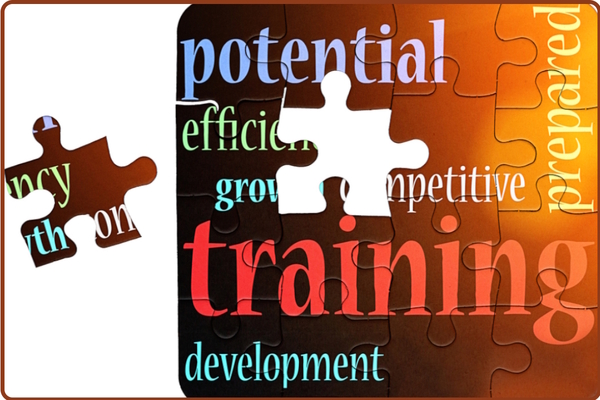Business warfare in the digital age

Consultant and author Paulo Cardoso do Amaral explains why military strategy holds the answers for navigating the digital age
The digital age is unlike anything humanity has seen before. Information that once travelled by horse or ship now rides photons and electrons, moving at nearly the speed of light with almost no energy cost. Because data flows so freely, waves of disruption arrive faster than organisations and societies at large can finish adapting to the previous one.
Strategy, at its core, is still the art of deploying resources to confront challenges, yet the military version of that art has suddenly become indispensable. Traditional business planning, built with steady and predictable change in mind, collapses under the sheer pace of today’s surprises. Military thinking, forged in uncertainty and conflict, offers principles that survive these shocks.
The principles of military strategy
General von Moltke, the Elder, the mastermind behind the tactics for German unification in the 19th century, famously observed that “no plan survives contact with the enemy.” Commanders accept that harsh reality and therefore build forces for rapid adaptation. Business leaders today must adopt the same mindset or risk extinction.
Second, soldiers operate inside a relentless intelligence loop because the enemy and the battlefield mutate by the minute. Modern firms need equally relentless data pipelines and real-time analytics for intelligence to keep decisions anchored in reality. That is the real value of agility.
Third, armies rely on decisive leadership that can pivot tactics the moment conditions shift. Similarly, corporate hierarchies must grant front-line teams similar freedom with real empowerment or lose precious time and increased attrition, with dire consequences on efficiency, effectiveness, and, ultimately, profitability.
Finally, in battle, tactics rule when senior commanders exploit the openings produced by small engagements. Equally, the most successful digital strategies in business today are not delivered by rigid plans but emerge from rapid, tactical experimentation scaling only what proves effective.
Military doctrine binds these principles
Sun Tzu, the Chinese general writing more than 2500 years ago, built his entire philosophy on intelligence, leadership, and timing. He would tell a modern executive that competitive advantage begins with deep situational awareness and a leader whose moral authority unifies diverse teams.
The hard part is choosing the proper tactic from the many possibilities. Sun Tzu also advances some lessons in that regard, but a century ago, Marshal Ferdinand Foch supplied the explicit measuring stick for the hard choice. He judged every tactic against three simultaneous criteria: (1) concentration of forces, (2) freedom of action, and (3) economy of effort.
Translated into modern business terms, leaders should keep their technology and talent architectures agile, throw overwhelming resources behind the few experiments that show real traction, and ruthlessly defund any initiative that no longer moves the campaign forward.
To grasp the wider battlefield, we turn to Clausewitz. His famous Trinity, i.e., government, army, and people, reminds us that regulators, corporate coalitions, and user communities all pull on one another. By dynamically mapping those shifting forces, executives can see hidden leverage in influencing a policy debate, forging an unlikely alliance, or sparking grass-roots adoption. Vision at that scale is now vital because, in the Digital Era, competition spills across industries and borders without warning.
Winning a clash, however, is only half the task. Machiavelli explains how to turn a tactical victory into lasting power. He shows leaders must emotionally, socially, habitually, and economically bind stakeholders to take advantage of victories.
In the Digital Era, that means crafting experiences people love, embedding network effects that make switching awkward, stripping away friction until alternatives feel painful, and personalising rewards so every user believes leaving would waste future gains.
When these four levers (emotions, social rewards, convenience, and greed) line up, a momentary lead becomes a durable fortress, which is how we capture value.
The operating model of business warfare
First, sense the environment continuously, according to Sun Tzu. Second, judge options through the Clausewitzian lens of policy impact, organisational capacity, and public sentiment. Third, commit resources where Foch’s calculus says freedom and concentration will yield a decisive effect. And fourth, use Machiavelli’s toolkit to lock in the gains and capture value. Then loop through the cycle faster than rivals can manage to respond. That is the winning recipe for navigating the Digital Age.
Jack Welch once warned that “if the rate of change on the outside exceeds the rate on the inside, the end is near.” That is why agility alone is no longer enough. The Digital Era dictates that organisations need orchestrated adaptability. Military principles like real-time intelligence, tactical primacy, disciplined resource allocation, and perception management reveal how to achieve it.
Companies that learn from Clausewitz’s clarity, Sun Tzu’s foresight, Foch’s tactical arithmetic, and Machiavelli’s mastery of influence will not just survive the digital era. They will define it.
Paulo Cardoso do Amaral is the author of Business Warfare, a globally recognised strategist, and an expert in competitive intelligence. From his work as former CIO, NATO Scientific Advisor on cyber-security in 2005 and conceiver of the Portuguese web3 strategy in 2023, through to his role as MBA Professor at CatólicaLisbon, Portugal, Paulo’s work bridges the gap between corporate risk, geopolitical strategy, and cyber-resilience
Main image courtesy of iStockPhoto.com and baona

Business Reporter Team
Most Viewed
Winston House, 3rd Floor, Units 306-309, 2-4 Dollis Park, London, N3 1HF
23-29 Hendon Lane, London, N3 1RT
020 8349 4363
© 2025, Lyonsdown Limited. Business Reporter® is a registered trademark of Lyonsdown Ltd. VAT registration number: 830519543





